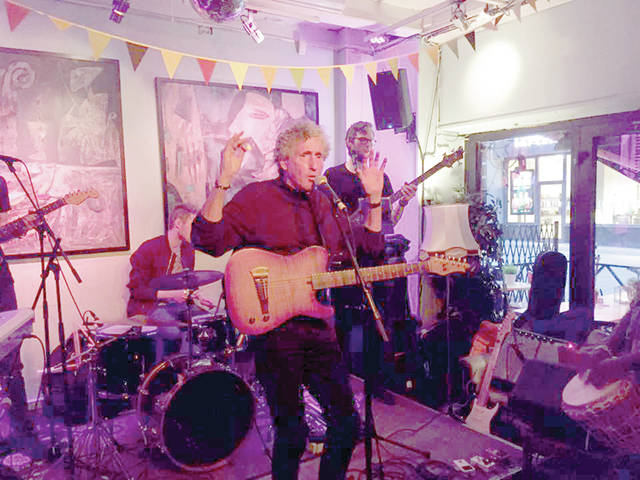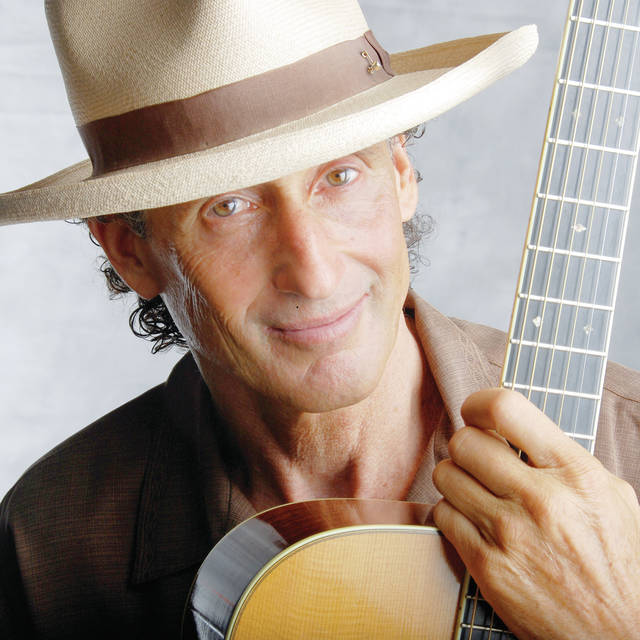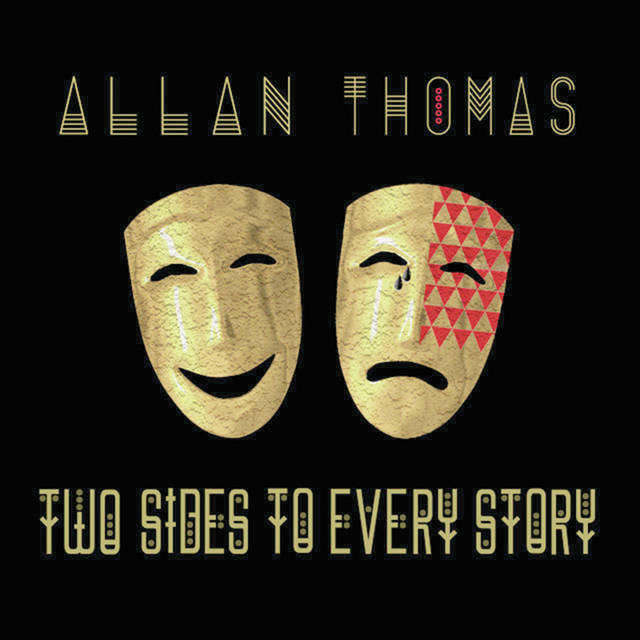For more than 30 years, Allan Thomas has been living and writing music on Kauai’s North Shore, and in August the singer-songwriter released his sixth album, featuring some of Kauai’s homegrown talent.
From a young Brooklyn teenager in doo-wop singing groups to the darkened coffee house corners of Greenwich Village in the 1970s, Thomas spent his life following the next tune.
That’s taken him from his first recording contract in 1966 with south Texas producer Huey Meaux to opening for acts like The Cannonball Adderley Quintet, The Marc Almond Band, and Livingston Taylor.
Leaving busy California in 1983, Thomas moved to Kauai, adding traditional Hawaiian music as another element to an already varied list of musical styles to his records and a few more talents — like surfing and wind surfing — to his resume.
Currently, Thomas is on tour through the mainland U.S. and Canada and will be back on island Nov. 1 to celebrate the release of “Two Sides To Every Story,” a mixture of vocal and instrumental tracks with different styles and musicians.
What drew you to Kauai in 1983 and what made you stay?
I was living in Malibu at the time, had been for 10 years, and was married to a fellow singer-
songwriter. We were a duo. Disco was beginning to happen and I was trying for a record deal, like so many others. I was uninspired.
I’ve always loved the islands. I wasn’t a surfer or windsurfer then, but I was born in Manhattan next to the East River and was brought up in Long Island and Brooklyn. I was always near the water.
I came to Kauai on vacation and it uplifted my soul and all of the sudden I was writing about the island and I was so inspired. It made me feel like home. I felt like when I got here there was no more looking around.
I‘d lived in Manhattan and California and traveled the world and it was time to settle down. Kauai opened its doors and heart to me. I still find to this day that Kauai’s people, they have aloha. Lucky we live Kauai, and we all feel so blessed.
I learned how to windsurf after a few years on Kauai. I was encouraged to surf by Titus Kinimaka about six years after living here, we were both musicians. I was 43 at the time and I became as obsessed with that as I did with music. That’s how you learn something, I was determined. So I became a windsurfer and a surfer and my love for Kauai grew by being able to do those things. Kauai has always supported me with students and gigs and I just feel it has some of the greatest people.
I’ve had experiences with Hawaiians and local people and out in Haena. I lived with a local family for 10 years and they took me under their wing and I felt that aloha, it was a tangible thing.
What was it like building yourself into a solo artist in Greenwich Village in the late 1960s, early 1970s?
I first heard the doo-wop singers when I was 12 and I got chicken skin on my arms. I said, “That’s what I want to do.” I started with doo-wop as a teenager for five years and then the groups broke up. So, I decided I’d go make forays into Manhattan as a singer. I’d bang on doors at like 1650 Broadway where Carol King and the songwriters were working and decided I’d try to get a deal and meet these interesting people.
When The Beatles and (Bob) Dylan happened, I realized people could write their own songs and I got serious with the guitar at (age) 17. I had a relationship that went sour after three years and it inspired me to write my first song. Once I had that experience of how songwriting can take you out of your mind and misery and into another realm, I wrote 12 songs in the first year.
I lived in Brooklyn then and could take a subway to play hootenannies and open mics. I was able to stay alive and became a teacher and got into owning a recording studio and performing regularly.
What kept you inspired?
I just kept going, that’s the interesting thing. I never was able to afford a house or any of that stuff, my only desire was to keep following my path of music and see where it would lead me.
It’s that next tune, that next idea, that spurs me on and here I am. I started writing in ‘67 and 51 years later, I’m as excited as I was then. I feel it’s so important to have a passion in life. Especially for young people. My students, I try to inspire them. Whether it’s music or something else, find something you love to do. When you’re working for something you love you don’t care how many hours you put into it. It’s worth it.
Your albums feature many musical styles. Why the variety?
I came up at a time before the Beatles and all of that — I came up loving R&B music. My first group, I was 12 years old and it was Brooklyn and we interpreted R&B. My ears were always open, though. There was soul and blues and Motown and then there was jazz.
I became a songwriter at 19 and started playing in the coffeehouses in Greenwich village. At 24 I did my first with Sire Records — they recorded Blondie and Madonna and so many groups, the early ‘70s.
Then I would tour as a soloist and would open for heavy jazz people, Cannonball Adderley Quintet. I would open shows for them and sang improvisational vocals at invitation. I don’t know if I could ever do it again, but it was a time in the early ‘70s where East meets West and people were talking about meditation and the jazz guys were thinking of the East.
I had a meditation teacher at the time and used to get into these conversations about meditation and energy. I still receive royalties 50 years later.
I always felt I had in my life besides an angel watching over me, a lucky star, something guiding me. I’ve always had this magnetism toward interesting people and especially musicians. I’ve had many brushes with greatness — Stevie Wonder, Joni Mitchell.
At 17 years old, I was walking down the street in Manhattan and I bumped into this guy with a beautiful woman who was walking an ocelot on a chain. I looked up and it was this European-looking guy with a super curled moustache. He kisses me on both cheeks and they walked away. I was like, “Wow, this guy just kissed me on the street.” Then a woman told me that was Salvador Dali.
What can people expect from “Two Sides To Every Story”?
I started writing and recording six years ago and put it together with six instrumental (songs) and eight vocals. I had such great players; to watch what these guys do is amazing. Jimmy Johnson, he played bass on the whole album and this is our third project together. Keith Carlock, I had him for nine songs.
On Kauai, we had guitar player Kirk Smart and Michael Ruff, he’s the keyboard player and singer-songwriter and he’s been playing on my albums since 1987. This time I had a couple girls from James Taylor’s band doing some background vocals.
Last album, David Crosby and Graham Nash sang backup vocals.
What about the lightheartedness of some of the tracks on “Two Sides To Every Story”?
I don’t think I was writing funny stuff in the beginning (of my career) but in the end you don’t take yourself as seriously and you find the humor in the world. It’s been such a wild path. You write love songs and I’ve written about trains and surfing and windsurfing, the palate is so open. I love the music of and lyrics of Randy Newman; he always had an irony and could make you laugh.
Part of this, it’s poking fun at stuff.
I also have one song on there that’s called “Troubled Times.” It’s not a happy or a funny song, that’s two sides to the story. The instrumentals and the vocals and the happy and sad and you can’t do a record without Crosby, Stills and Nash, Lennon, so many people would have message songs about what’s happening in life and I had to go in that direction as well with “Troubled Times,” but it’s not leaving people with the negative, leave with hope
Troubled times keep hope alive.
•••
Jessica Else, staff writer, can be reached at 245-0452 or jelse@thegardenisland.com.








There is something on this CD for everyone….Great lyrics, sweet musicianship, humor..the whole ball of wax! Mahalo, Allan –